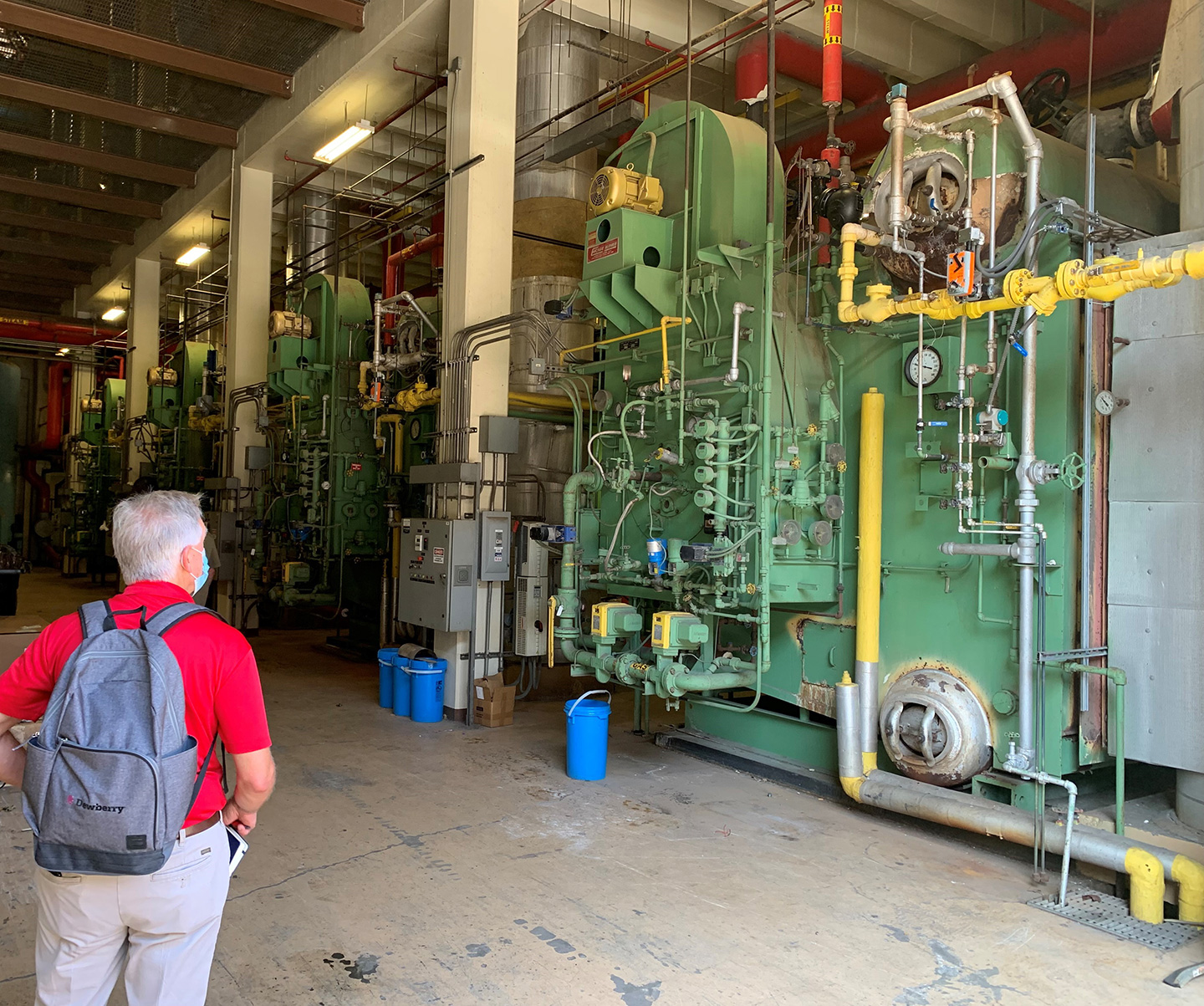We’ve seen an uptick in hospital leadership asking their construction and facilities management staff about what they are doing to accommodate sustainability. As a facility manager, if you’ve fielded these questions, you’re certainly not alone. Several states have passed legislation to require electrification in new buildings and healthcare regulators, such as Centers for Medicaid and Medicare Services (CMS), are considering requirements for pushing healthcare facilities into a more sustainable future. We’ll discuss what you may already be doing to decarbonize, how to better decarbonize, and why decarbonization is important.
Good News! You’re Probably Already Decarbonizing and May Not Even Know it.
Have you replaced your fluorescent lighting with LEDs? Have you implemented heating, ventilation, and air conditioning (HVAC) night setbacks in your operating rooms? Have you repaired refrigerant leaks? If you have, you’re already decarbonizing. Taking the initiative to lower the energy use in your facility is a simple step towards decarbonization. Monitoring energy usage and carbon emissions is possible through energy metering. Measuring energy usage before and after improvement projects allows facilities to track progress.
What is Decarbonization?
Decarbonization is the process of reducing carbon emissions associated with electricity, industry, and transportation. The building sector accounts for an estimated 40% of these energy-related carbon emissions, and healthcare facilities have the potential to make a greater impact than an average commercial building because their energy usage is much higher. Even though healthcare facilities account for less than 5% of the commercial building square footage in the U.S., they account for 10% of the energy used in the sector. In addition to energy usage, a buildings’ carbon emissions also consist of embodied carbon, which is the carbon emissions that occur from the full life cycle of a particular material, including its manufacturing, transportation, and disposal.
According to the Green House Gas (GHG) Protocol, a company’s GHG emissions is broken into three scopes:
- Scope 1: Direct emissions from on-site sources
- Scope 2: Indirect emissions from purchased energy
- Scope 3: All other indirect emissions within the value chain of the company
For hospital engineers, the reduction of Scope 1 and Scope 2 emissions – or a building’s operational carbon emissions – is where we can have the most impact. Electrification and controlling refrigerant leaks contribute toward reducing Scope 1 emissions, while energy efficiency and reduction strategies contribute to reducing Scope 2 emissions. Although hospitals cannot control the emissions of the energy company it buys from, there may be options to purchase renewable energy credits, which could also reduce a facility’s Scope 2 emissions. Reducing a building’s embodied carbon, or Scope 3 emissions, is much more challenging than reducing its operational carbon. This article will focus on reducing Scope 1 and 2 emissions.
Why should you consider decarbonization? Doing so can lead to lower energy bills, a smaller carbon footprint, and alignment with your facility’s own carbon reduction goals.”
Natalie MacDonald and Andrew Benson
 There are many challenges to decarbonizing/electrifying gas-fired steam boilers. It is important to assess what you have and make a plan for the whole system before replacing equipment.
There are many challenges to decarbonizing/electrifying gas-fired steam boilers. It is important to assess what you have and make a plan for the whole system before replacing equipment.
Where Should Healthcare Facility Managers Start?
Every building is unique and each one will have a different avenue to effectively decarbonize and reduce energy consumption. For example, if your facility installed a new gas-fired, cast iron steam boiler 10 years ago, it probably would not be a good decision to replace it with an electric option today. That money could be put to better use, such as investing in energy reduction strategies like retro-commissioning, for example. The best place to start is evaluating what you have and making a plan on how to best move forward. At the same time, it’s crucial to benchmark your facility and compare how other facilities are performing. In order to benchmark, it’s important to meter your utilities. If your facility is made up of multiple buildings, it could be worth considering having local submeters to more accurately track the effects of energy reduction or electrification projects, as well as allow you determine your lowest preforming buildings, which are the areas you want to address first. Other places to start investing time and resources into include:
- Conducting an energy master plan or facility condition assessments
- Performing renewable energy feasibility and life cycle cost studies
- Energy metering and benchmarking
- Carbon benchmarking
- Refrigerant log review and analysis
What’s Next?
Once a baseline is established, optimizing your facility is the first logical step, and may include retro-commissioning, plant optimization, and repairing refrigerant leaks. This step generally has quick payback, so it’s beneficial for both decarbonization and cost. After optimizing a facility’s performance, it’s time to start thinking about electrifying equipment. This process takes an intentional approach through careful planning, since every hospital facility and building have unique challenges and requirements. Electric technology, such as heat pumps, are constantly improving, and the grid will continue to reduce its emissions along with the decarbonization of buildings. Because of this, it is important to continue to re-analyze options in the future.
Long-term considerations for the future include on-site renewable power, implementing battery storage, or incorporating microgrids on a facility’s campus. So, why should you consider decarbonization? Doing so can lead to lower energy bills, a smaller carbon footprint, and alignment with your facility’s own carbon reduction goals. Because each healthcare facility is different, creating a plan unique to your facility can help make the steps towards decarbonization more manageable.
Click here to read part 2 and here to read part 3 of this blog series on decarbonizing facilities.